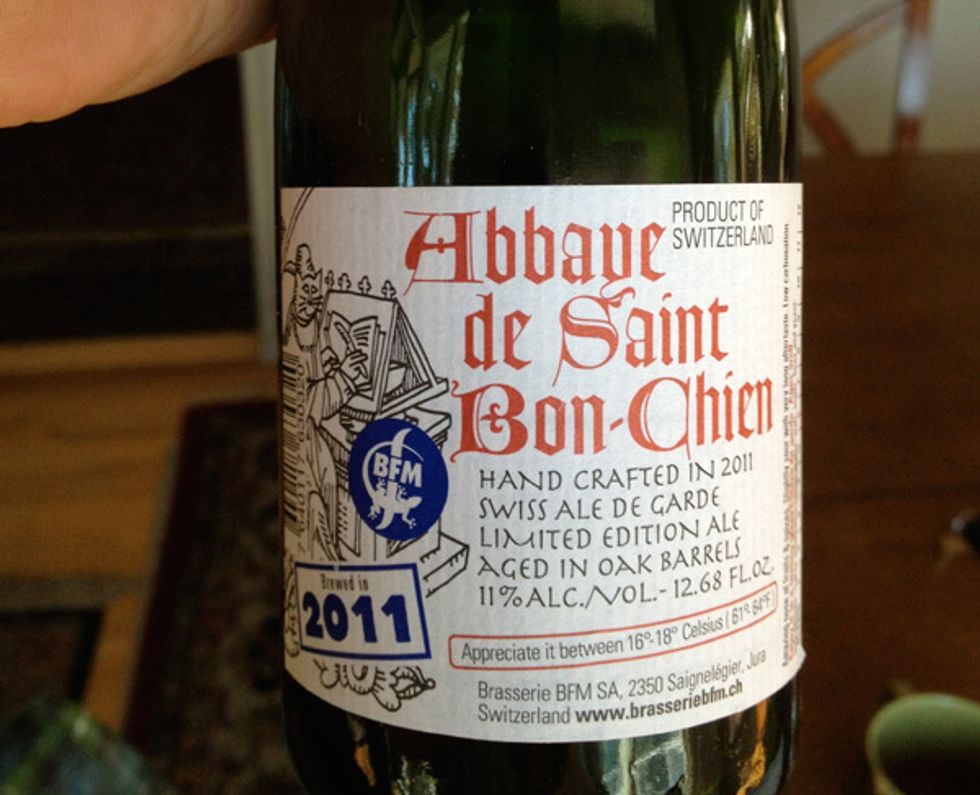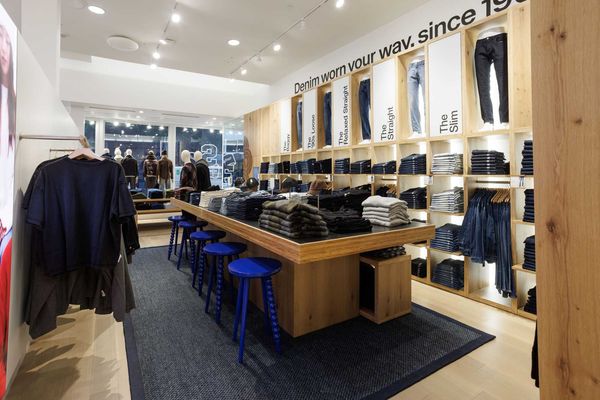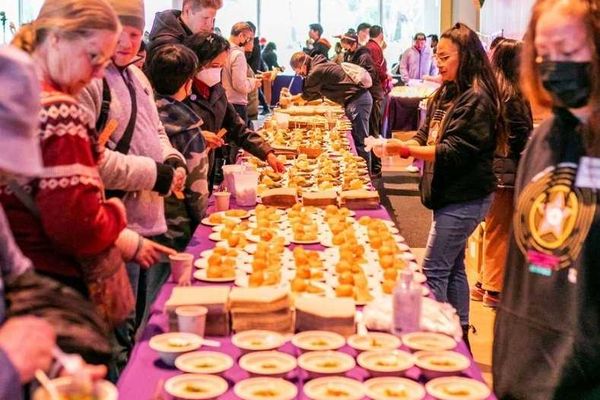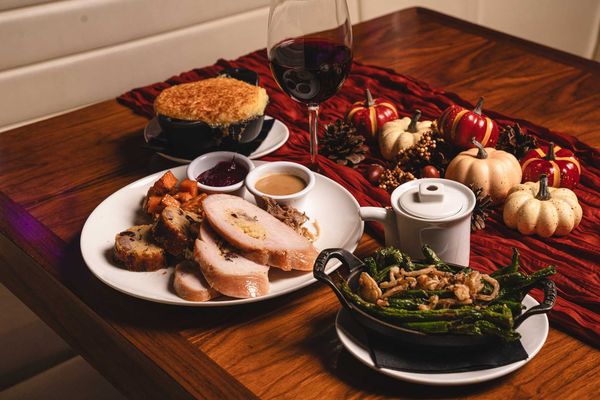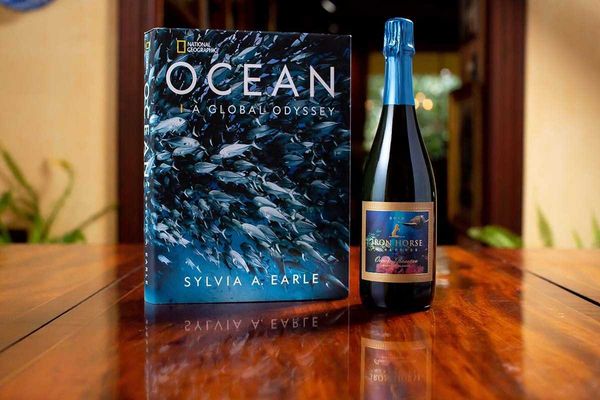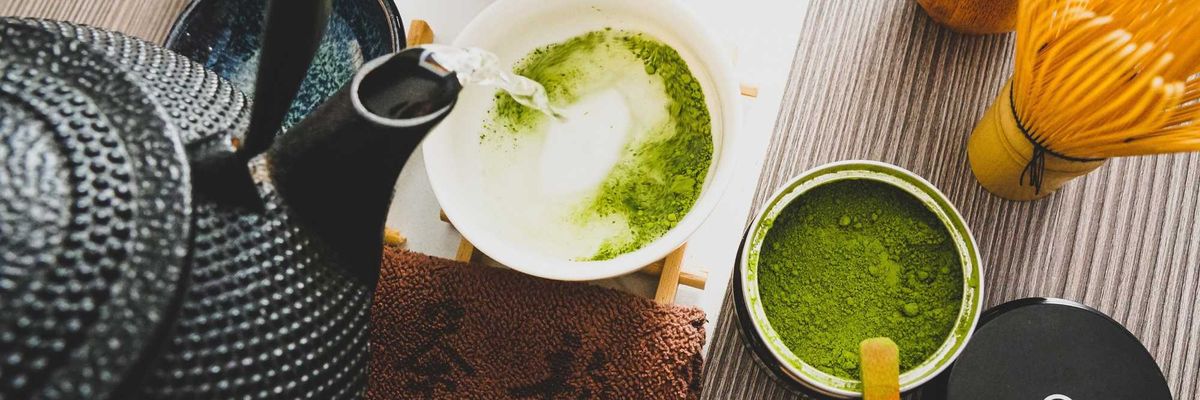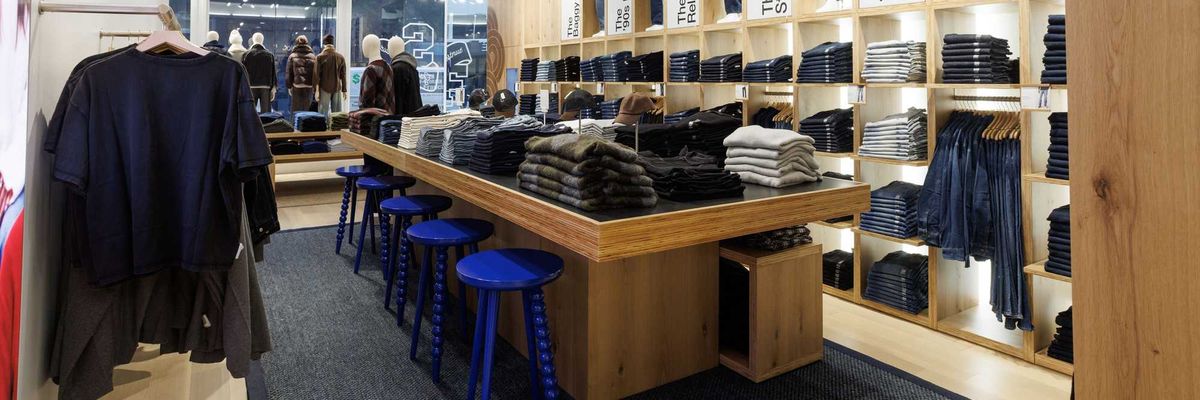I had a moment of discovery while researching the piece about sour beer that I wrote for the May issue of 7x7 that is probably worth mentioning. I was familiar with the genre before, but I quickly figured out that this wasn't the kind of trend — like rosé wine or rye whiskey -— that was likely to appeal to a wide range of drinkers. But in one particular side-by-side comparison, via Danish brewer Mikkeller, I came to realize that sour beers are primarly about funk, and funk, when it comes to beer, means complexity.
Sour beers are fascinating, often strange, and generally food-friendly because of their acidity, but one thing they're not is easy-drinking. Well, most of them arent. But thanks to a special-edition Yeast Series of beers released this year by Mikkeller's Mikkel Borg Bjergsø, one can geek out over the exact differences created by certain yeasts when added to the same base beer. Bjergsø made six styles of beer with that same base: Lager, English Ale, American Ale, Saison, Brettanomyces Lambicus (the yeast used in traditional Belgian Lambics), and Brettanomyces Bruxellensis (the yeast used in Flemish reds). The latter two were by far the most nuanced, acidic, and interesting of the six, but they were also the least pleasant to a traditional beer drinker's palate, and both the American and English ales were the least flavorful or complex, but also the most drinkable.
Sour beer marks a return to, and rediscovery of, beer-making traditions that existed long before the standardization and industrialization of the brewing process that happened in the last two hundred years. Hence, people's tastes for beer has shifted far away from the funky, unpredictable, downright barnyard-y flavors that come from adding certain yeasts and bacterias during the brewing process. As local beer expert and certified master ciccerone Rich Higgins explains, "Most beer is made with brewer's yeast, which eats sugar and ferments the beer, but doesn’t create much acid. Add other yeasts, wild yeasts, or bacteria, and you end up with a sour beer."
The original traditions of sour beer-making come from Belgium and parts of Germany, and some of these beers are gaining cult status among American beer geeks who until recently weren't familiar with this funkiest end of the beer spectrum. Now you have American brewers, like The Bruery in Orange County and Russian River Brewing Company, who are experimenting with different kinds of yeasts in order to emulate those older traditions and create new beers.
"Two hundred years ago, most beers went sour at some point," Higgins says. "The ability to make beers that aren't sour is relatively new. In the old days, because bacteria lives everywhere, sourness was everywhere." The beer flavors we're more accustomed to today originated in more mountainous places in Germany where hops grew prevalently but where temperatures were low enough that bacteria production was depressed. In warmer places you had more inevitability for bacteria and natural flora floating in off the air and affecting the beer during fermentation and storage.
I noted a few easier-drinking examples in this primer, like the popular Duchesse De Bourgogne that you can try at Bar Tartine, City Beer Store, and elsewhere, but below I've got a few more suggestions of foreign brews to sample that land more in the "acquired taste" category, as well as some more American examples that did not make into the print piece.
Mikkeler Yeast Series
Available at Healthy Spirits, 2259 15th Street at Castro
Oude Kriek, Brouwerij Fonteinen
A truly tart, incredibly sweat-socky example of a traditional, unsweetened Belgian Lambic.
Available at City Beer Store, 1168 Folsom Street at 8th, or The Jug Shop, 1590 Pacific Avenue.
Abbaye de Saint Bon-Chien, Switzerland
A delicious and wildly complex example of a Swiss sour beer, with funky and deeply earthly notes, as well as stone-fruit complexity on the finish.
Available at Healthy Spirits, and via this site.
Petrus Aged Pale, Brouerij Bavik
A musty, barely sweet sour with lemon and apple cider vinegar notes.
Available at Toronado, City Beer Store, and elsewhere.
Fuego del Otono, Jolly Pumpkin Artisan Ales, Michigan
A spicy, totally intriguing sour beer with caramel notes.
Available at Abbot's Cellar
Coolship Series, Allegash Brewing Company, Maine
Higgins highly recommends these beers from Allagash, one of his favorite American brewers, which are exposed to air and naturally occuring flora in the first American example of such a process. The beers are not widely available, though may be found via the brewery.
Sanctification, Temptation, or Beatification, Russian River Brewing
We mentioned Supplication in the print piece, but Russian River has created an extensive series of sours, each with a distinct character of its own.
Available at The Jug Shop, City Beer Store, Toronado, and elsewhere.
Previously: Pucker Up to Beer's Latest Trend



